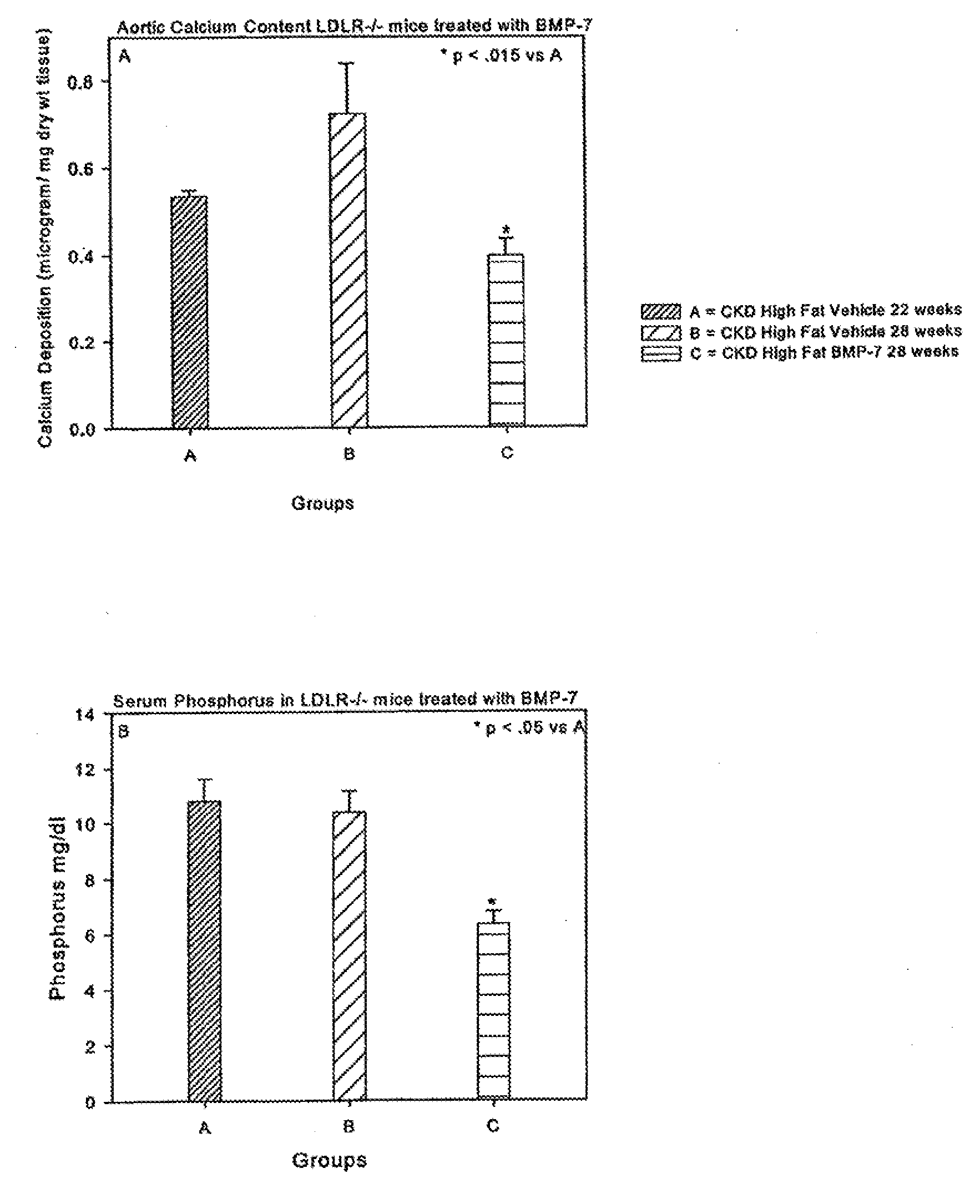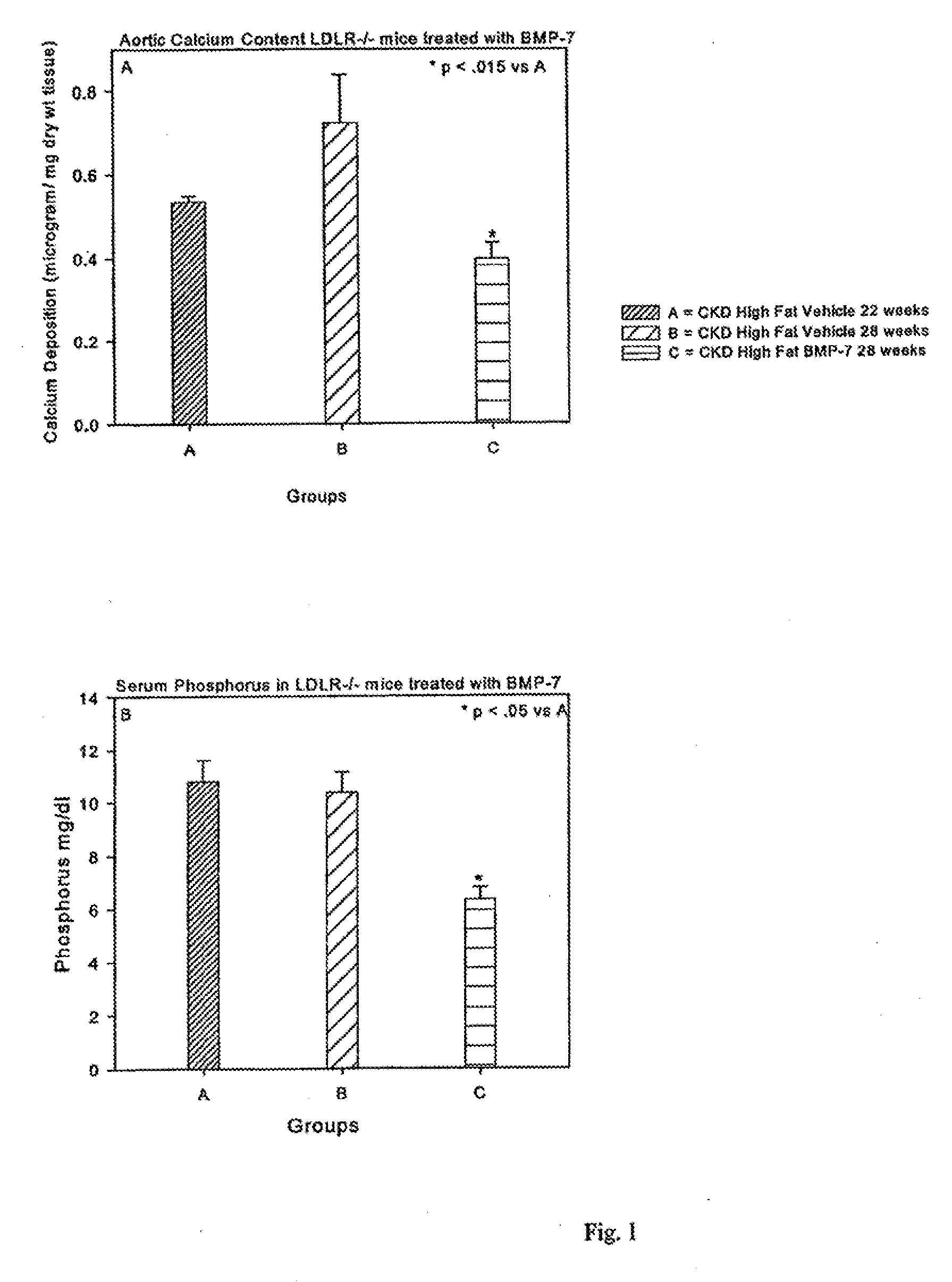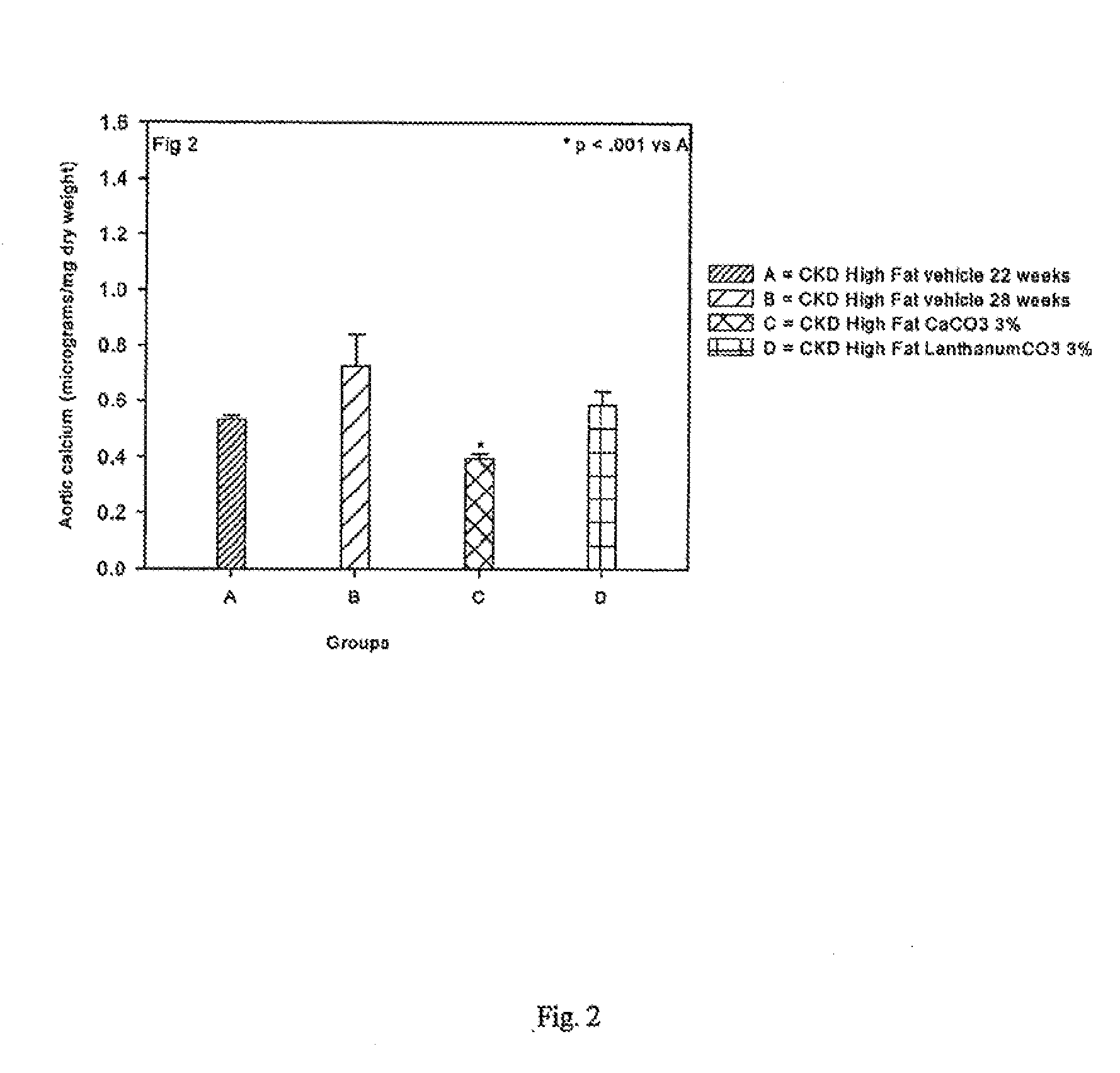Bmp-7 for use in treating vascular sclerosis
a technology of vascular sclerosis and bmp-7, which is applied in the field of prevention and treatment of vascular sclerosis, neointimal hyperplasia and vascular calcification, can solve the problem that the failure rate of 66% at 2 years remains unacceptable, and achieves the reduction of osterix activity, preventing initial or further calcification of blood vessels, and reducing osterix activity.
- Summary
- Abstract
- Description
- Claims
- Application Information
AI Technical Summary
Benefits of technology
Problems solved by technology
Method used
Image
Examples
example 1
[0124]Animals and diets: LDL receptor null (LDLR− / −) mice on a C57Bl / 6J background were purchased from Jackson Laboratory (Bar Harbor, Me.) and bred in a pathogen-free environment. Animals were weaned at three weeks to a chow diet [1:1 mixture of Pico Lab rodent chow 20 and mouse chow 20, 6.75% calories as fat]. At 10 weeks, animals were either continued on this chow diet or initiated on a high cholesterol (0.15%) diet containing 42% calories as fat [Harlan Teklad, Madison Wis., Product No. TD88137]. For some animals, the diet was supplemented with 1% or 3% CaCO3. Animal diets supplemented with CaCO3 were previously reported.20 Animals were given access to water ad libitum. BMP-7 was provided by Johnson and Johnson (Raritan, N.J.). The Washington University Animal Care committee approved the study protocol. Animal experiments were performed according to the NIH Guide for the Care and Use of Laboratory Animals and approved by the Washington University Animal Studies Committee.
example 2
[0125]Induction of CKD: A two-step procedure was utilized to create uremia as previously described. (Davies 2003; Lund, 2004)19;21 Saphenous vein blood samples were taken 1 week following the second surgery to assess baseline post-surgical renal function. Animals were sacrificed under anesthesia 28 weeks post natal. At the time of sacrifice, blood was taken by intracardiac stab, and the heart and aorta dissected en bloc. The BMP-7 treated group received intraperitoneal injection of BMP-7 10 μg / kg dry weight once weekly in 100 μl vehicle [mannitol (5% w / v), NaAcetate buffer (20 mM, pH 4.0-4.5), sterile water]. This is the same dose used in our previous studies. (Davies 2003; Davies 2005)19;20
[0126]Animals were allocated to one of seven CKD high fat fed groups after the second surgery: Other control Groups included LDLR− / − sham operated mice on chow diet, and LDLR− / − mice with CKD on chow diet. C57B16 WT mice fed chow served as the normal benchmark source. Data from these control gro...
example 3
[0127]Blood tests: Serum was analyzed on the day of blood draw for blood urea nitrogen [BUN], cholesterol, calcium and phosphate by standard laboratory methods. Before initiation of therapy, blood was obtained through saphenous vein. At the time of sacrifice, blood was obtained through intracardiac stab.
PUM
| Property | Measurement | Unit |
|---|---|---|
| Temperature | aaaaa | aaaaa |
| Temperature | aaaaa | aaaaa |
| Temperature | aaaaa | aaaaa |
Abstract
Description
Claims
Application Information
 Login to View More
Login to View More - R&D
- Intellectual Property
- Life Sciences
- Materials
- Tech Scout
- Unparalleled Data Quality
- Higher Quality Content
- 60% Fewer Hallucinations
Browse by: Latest US Patents, China's latest patents, Technical Efficacy Thesaurus, Application Domain, Technology Topic, Popular Technical Reports.
© 2025 PatSnap. All rights reserved.Legal|Privacy policy|Modern Slavery Act Transparency Statement|Sitemap|About US| Contact US: help@patsnap.com



